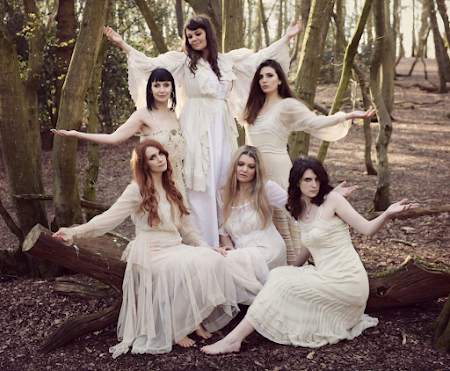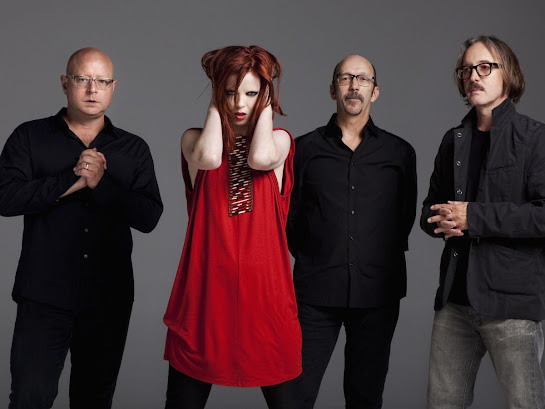#The Move #Roy Wood #Jeff Lynne #psychedelic rock #blues rock #hard rock #British psychedelia #psychedelic pop rock #art rock #proto-prog #proto-metal #1960s #music video
Colour Me Pop was a BBC television series from the late 1960s that devoted itself to some of the best rock & roll acts of the period, without the usual compromises that such programs engaged in - groups would perform on camera, with their microphones live and their instruments plugged in, for as long as 30 minutes at a clip, and they wouldn't limit themselves to singles, either; Colour Me Pop was among the first television shows on either side of the Atlantic that could be used to perform and showcase album-length bodies of music.
The Move's set captures the four-man lineup behind Shazam in peak form. Whether they're playing hard electric numbers like "I Can Hear Grass Grow" or acoustic guitar driven pieces such as "Beautiful Daughter," or pieces that were otherwise unrepresented in their history, such as "The Christian Life" and "Goin' Back," they sound great - indeed, the version of "The Last Thing on My Mind" here is superior to the officially released studio recording on Shazam, and also makes good use of super-imposition and split-screen effects for its time. Oh, and the sound is excellent.
From: https://www.allmusic.com/album/colour-me-pop-the-small-faces-the-move-dvd--mw0001009492
I've seen the Moody Blues, Small Faces and The Move episodes of Colour Me Pop. Does anyone know if these performances are studio backing track with live vocals?
Somewhere in the dark part of my brain I remember seeing a web site that dealt with that very question. The interesting thing was that it varied, even within a particular episode. For instance, 'Fire Brigade' on The Move show is live, but there are other songs that aren't.
The Move January 1969
Several tracks are completely live - vocals and band - either that or the totally "live" numbers were exclusive pre-recorded backing tracks. Fascinating to see and hear Carl Wayne on bass on "The Christian Life" and interesting to compare the vocals on "I Can Hear The Grass Grow" to the 1967 "Beat Beat Beat" version with Ace Kefford. "Fire Brigade" is just magnificent. However, "Wild Tiger Woman" is a mime to the single release, as is "Something". "Beautiful Daughter" is a curious one - it's a mix of what appeared on "Shazam" - the vocal is identical but the mix is very different since it features a drum part on it and there's no strings - I think - getting a bit confuddled here myself (hence swiftly re-editing this post a couple of times). All three shows are magnificent slices of early colour British pop TV. How tragic that the vast majority of episodes of this show were wiped - editions featuring Love Sculpture, Family, David Bowie, Orange Bicycle, The Kinks, The Hollies, Manfred Mann and many more, all lost forever.
From: https://forums.stevehoffman.tv/threads/colour-me-pop-uk-tv.146238/
Occasionally plundered for clip shows, The Move’s Colour Me Pop appearance from 4th January 1969 saw them tearing through hits like Flowers In The Rain and Fire Brigade as well as the popular b-side Something, chaotic chart-missing single Wild Tiger Woman, a work in progress version of Beautiful Daughter, and covers of the Gerry Goffin and Carol King number Goin’ Back and bluegrass standard The Christian Life, both of which had recently also been covered by The Move’s noted favourites The Byrds. As well as an early sighting of the sort of glittery jackets that the Carnaby Street boutiques had recently started to sell – maybe inspiring David Bowie and Marc Bolan to take a trip to Alkasura the following Monday – this performance is also notable for capturing the band as they were adjusting to the recent departure of original bass player Ace Kefford. The Move had always shared out lead vocals as the ‘narrative’ of each song dictated – if you want a good trivia question to catch someone out with, ask them who the first person heard singing on BBC Radio 1 was; chances are they’ll know the first record played was Flowers In The Rain and automatically say Roy Wood, but the opening verse was actually handled by Carl Wayne – and Ace Kefford can be heard prominently on many of their best known singles. Although any fan of The Move would be able to tell that they were audibly struggling to compensate for his absence in places, their vocal interplay nonetheless caught John Lennon’s attention; while discussing how to approach The Beatles’ new songs, he mentioned the effect that The Move’s distanced stage positioning had on their vocal arrangements and began playing around with ideas inspired by that. This was an especially startling moment for me, as when I had a chat with Beatles expert Chris Shaw about the Yellow Submarine soundtrack, we got on to the subject of speculation about how The Beatles might have sounded if they had started playing live in 1968. Sceptical of some of the more fanciful ideas of string sections and elaborate stage effects, I had suggested instead that they’d have sounded more like the flashy psychedelic pop captured on the live album Something Else From The Move. It’s quite something to realise how close to the reality that very nearly was. From: https://timworthington.org/2021/12/21/did-you-watch-the-bbc2-thing/

































